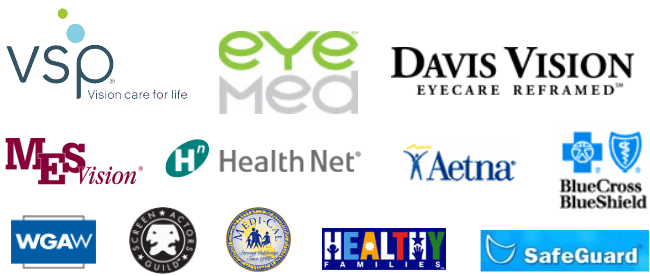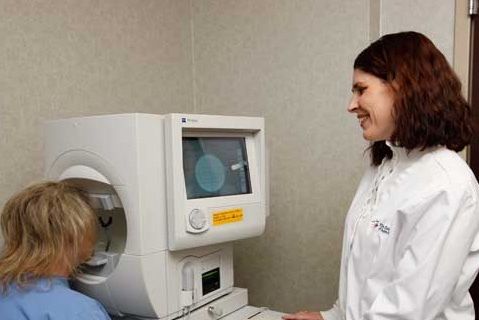Optometric Billing-When To Bill Medical Vs. Vision Plans
- By Andrew Roy
- •
- 26 Jan, 2016
- •
Should you bill one plan or all the plans? Let the patient decide.

It's both a blessing and a curse the world we practice in. Many patients have both medical and vision plans that they carry for coverage and it's your job to know when to bill one or both of them. Effectively being able to do so will not only be beneficial to your practice and your bottom line but to your patient as well.
Below, you will find a set of guidelines that you should follow in order to make this decision. I must point out, however, that whenever you decide to go down this path it is imperative that you INVOLVE THE PATIENT IN THE DECISION MAKING PROCESS! What do I mean by this? First, simply having a patient sign a piece of paper declaring that you can bill whichever insurance you deem necessary is not enough, in fact it is NOT ETHICAL AND IT IS NOT LEGAL IN MOST STATES! This is because you are taking away the patient's right to choose which benefits he/she wants you to use. Therefore, when making the decision to bill one or all of a patient's insurance plans you must verbally inform the patient of your intentions and make sure they understand and are ok with this. It is a good idea to have this conversation with the patient in the exam room. Tell him what you are thinking will be the best course of action based on his/her diagnosis and ask them if they understand and are ok with it. The patient will see that you care, both about their health and their pocket.
Published in Optometry Coding Alert, October 2004
Click Here to subscribe to latest Optometry Coding Alert.
Use the patient’s chief complaint and history of present illness to decide
When a patient has two kinds of insurance - medical coverage and routine vision coverage - billing the wrong carrier when you find a medical problem could put you at the wrong end of a fraud charge.
Along with their medical insurance, many of your patients might have supplemental private insurance - such as AARP Eye Health Services or CBIA/Aetna Vision One - to cover routine eye examinations. When you find a medical problem like cataracts or glaucoma while doing a routine eye exam on these patients, you have a dilemma. Should you bill the patient’s medical insurance, since you found a medical condition? Should you bill the patient’s vision insurance? Or can you even bill both?
Bill Medical Coverage if There Is a Complaint
The answer depends on the patient’s reason for being there, says Becky Ross, billing specialist for Eye Q Vision Care in Fresno, Calif. Bill based on the patient’s chief complaint and history of present illness (HPI). If he has a specific complaint that can be attributed to a non-refractive diagnosis, then it’s a medical visit and should be billed to the medical insurance, Ross says.
Example: A patient arrives complaining of blurred vision. You find that cataracts are causing the blurriness. Bill the patient’s medical insurance with the appropriate eye exam code (92002-92014) and link it to the appropriate cataract code (366.xx). As a secondary diagnosis, report 368.8 (Other specified visual disturbances [blurred vision NOS]). If, however, you found no cataracts or any other condition causing the blurred vision, report 368.8 as the primary diagnosis.
Bill Routine Coverage if There’s No Complaint
What if the patient doesn’t have a complaint? The rule still holds: Code according to why the patient is there. If the patient comes in with no specific complaint, but you diagnose a medical problem, report the routine visit as the primary diagnosis and the medical condition as the secondary diagnosis. Bill that visit to the patient’s vision carrier, says Tuija Kaarrekoski, billing specialist with the Seattle Eye Center.
If there is a follow-up exam later, the medical condition will be the primary diagnosis and the bill goes to the patient’s medical insurance.
Example: A patient comes in for the routine eye exam that his vision insurance provides and has no complaint. You discover bilateral nuclear sclerotic cataracts. Bill the patient’s vision insurance with the appropriate E/M code (99201-99215) and link it to ICD-9 code V72.0 (Special investigations and examinations; examination of eyes and vision).
As a secondary diagnosis, report 366.16 (Senile cataract; nuclear sclerosis).
Bill Both When Performing Extra Diagnostics
If a patient presents with no complaints, but you find something that makes it necessary to perform tests in addition to the routine screening, you may be able to bill both the medical and the visual insurance.
Example: A patient is in for a routine exam and has no complaints. As part of your exam, you find intraocular pressures of 30 mm Hg in both eyes and suspicious cupping. You perform extended ophthalmoscopy and visual fields but find no glaucoma.
Since the patient had no complaints, you would need to bill the patient or his vision plan for the initial visit, however brief or comprehensive, says David Gibson, OD, FAAO, a practicing optometrist in Lubbock, Texas. But you could bill any additional tests as medical, even if you perform them on the same day.
Bill the eye exam with the appropriate eye code to the patient’s vision insurance. Bill 9208x (Visual field examination, unilateral or bilateral, with interpretation and report; …) and 92225 (Ophthalmoscopy, extended, with retinal drawing, with interpretation and report; initial) to the patient’s medical insurance. Link the CPT codes to ICD-9 code 365.01 (Borderline glaucoma [glaucoma suspect]; open angle with borderline findings) - or the appropriate 365.xx code if you found glaucoma.
“What you absolutely should not do is bill both companies for the initial exam,” Gibson says. “That is fraud. But billing the routine exam to the patient and extended ophthalmoscopy and visual fields to the medical insurance keeps you honest and able to defend an audit.”








